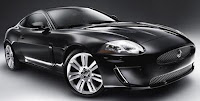Audi TT RS, 2010
The Audi TT RS has a turbocharged 2.5-liter engine with direct gasoline injection; it produces 250 kW (340 bhp) and 450 Nm (331.90 lb.-ft.) of torque. The blazing five-cylinder engine enables the Audi TT RS to perform extraordinary feats. In conjunction with quattro permanent all-wheel drive and a high-performance chassis, the engine makes the compact Audi TT RS a top-notch sports car - available as a coupé or roadster.
Sporty five-cylinder gasoline engines have a long legacy at Audi. The most famous is arguably the turbocharged 2.1-liter engine in the Audi quattro. The first version, which was launched in 1980, offered an impressive 147 kW (200 bhp). And the Audi Sport quattro from 1984, directly inspired by motorsport, delivered a whopping 225 kW (306 bhp). For 25 years, turbochargers and quattro have been a dynamic formula for success.
Audi has resumed using this recipe. Designed from scratch, the five-cylinder engine combines a turbocharger with FSI direct gasoline injection to elevate the Audi TT RS to a high-performance sports car. The TFSI delivers 250 kW (340 bhp) from a displacement of 2,480 cc (151.34 cu in): a specific output of 100.8 kW (137.1 bhp) per liter.
The power-to-weight ratio is also outstanding. In the case of the Coupé, which weighs in at a mere 1,450 kilograms (3,196.70 pounds), the power-to-weight ratio is just 4.3 kilograms per bhp. The Audi TT RS Roadster has a weight of 1,510 kilograms (3,328.98 pounds) and a power-to-weight ratio of 4.4 kilograms per bhp - thanks to its extremely lightweight and largely aluminum body constructed as per the Audi Space Frame principle.
The Audi TT RS Coupé rockets from 0 to 100 km/h (0 to 62.14 mph) in 4.6 seconds; the Audi TT RS Roadster needs just a tenth of a second longer. The limited top speed of 250 km/h (155.34 mph) is merely the official figure for both versions; as an option, Audi can increase it to 280 km/h (173.98 mph).
Compact and Lightweight: The Five-cylinder TFSI
The ultra-powerful five-cylinder engine is extremely fuel-efficient, requiring an average of just 9.2 liters/100 km [25.57 mpg] as regards the Coupé (Roadster: 9.5 l/100 km [24.76 mpg]). Switchable flaps in the intake manifold mix the incoming air in a calculated configuration. Injected at a pressure as high as 120 bar by the common-rail system, the gasoline swirls intensely in the combustion chamber - which in turn cools the walls. This subsequently facilitates a compression ratio of 10.0:1, which is very high for a turbocharged engine. Both of the adjustable camshafts, controlled via chains, also enhance charging efficiency with respect to the air-fuel mixture.
The large turbocharger generates up to 1.2 bar of boost pressure. The intercooler, fed air ideally by the lower segment of the single frame radiator grille, reduces the temperature of compressed air by over 80 percent at full load.
When an Audi TT RS driver pushes the standard Sport button on the center tunnel, a flap installed in the left exhaust tailpipe renders the exhaust noise even more robust and intense while boosting engine responsiveness. An optional Sport exhaust system is available with matt black tailpipe trims and sound flap.
For Purists: The Driveline
The Audi TT RS is the first classic sports car in the Audi RS family. Like the Audi RS4 and the Audi RS6, the Audi TT RS was developed by quattro GmbH as a pure, no-holds-barred driving machine. A new six-speed manual transmission conveys the engine's tremendous power, and permits easy and precise operation thanks to a specially designed shift lever boasting particularly short shift travel. The transmission's defining characteristics are a high efficiency ratio and a sportily narrow spread of the gear ratios.
The Audi TT RS features quattro permanent all-wheel drive as standard equipment. Its heart lies at the rear axle: an electronically controlled, hydraulic multi-plate clutch. If a situation calls for it, the clutch redirects a majority of the torque input from the front wheels to the rear wheels.
High-tech Excellence from Audi: Chassis and Body
The chassis of the Audi TT RS builds on the cutting-edge foundation of the base Audi TT design. The four-link rear suspension, which handles longitudinal and lateral forces separately, plays a crucial role. The electromechanical steering is highly efficient and the power steering adjusts to the vehicle's speed. With aluminum in the front and sheet steel in the back, the body's innovative mixture of materials results in a well-balanced axle-load distribution, excellent crash safety, and the outstanding rigidity which lays the cornerstone for the car's precise handling.
The Face of Power: The Exterior
At just 4.20 meters (13.78 feet) in length, the vigorously compact Audi TT RS hints at its explosive potential from the very first glimpse. The front spoiler tapers downward into a splitter, reminiscent of a racing car. The large and squared air inlets have diamond-shaped inserts. And the high-gloss black single frame grille with a frame in matt aluminum look and the TT RS badge bear the same styling. The xenon plus headlights with LED daytime running lights notify faraway drivers that an Audi TT RS is approaching.
The Interior and Equipment Packages
The dynamic exterior of the Audi TT RS is matched by the interior. The leather multifunction sports steering wheel has an especially thick rim, is flat-bottomed, and is covered with perforated leather. Integrated in the instrument panel, the driver information system can display boost pressure and oil temperature as well as a lap timer for chronicling feats at the racetrack. The door handles consist of two slim strips - typical of Audi RS models. An automatic climate-control system and the concert sound system are standard, as are an electrohydraulic soft top and an electric wind deflector for the Audi TT RS Roadster.




















































